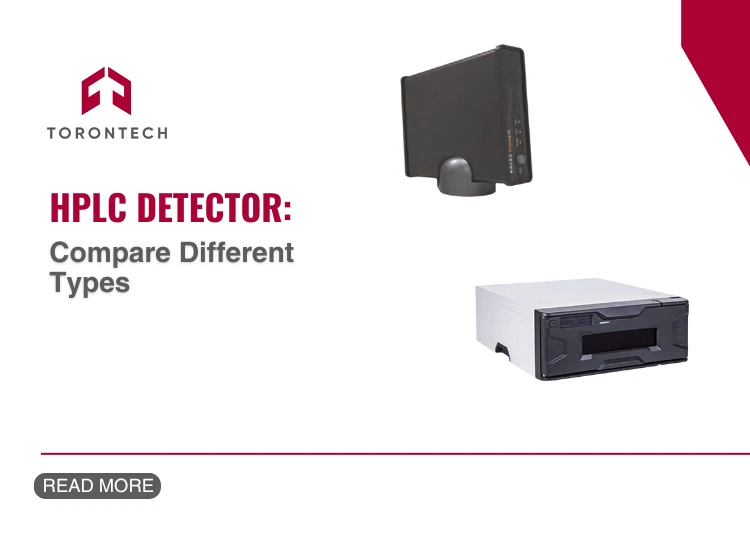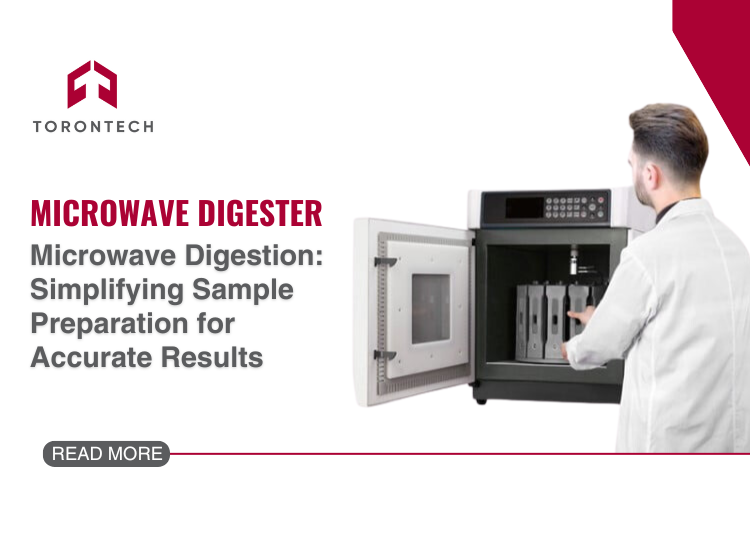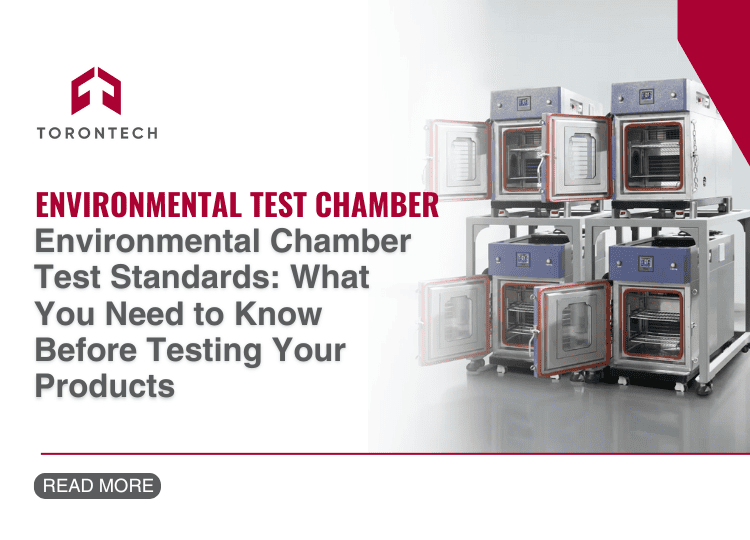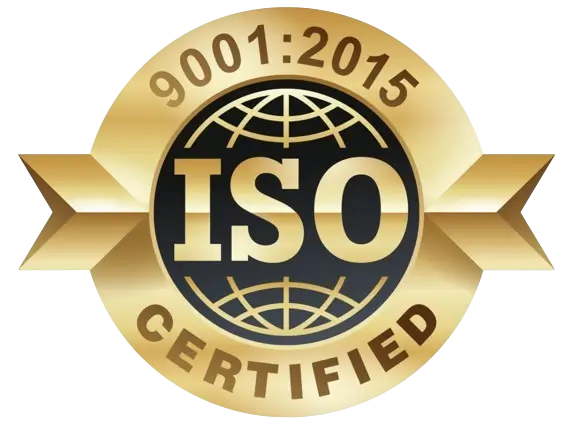The detector you choose for your HPLC testing is one of the most consequential decisions your lab will make.
It is the component that translates a separation into a result. A suboptimal choice among the different types of HPLC detectors introduces unacceptable delays and risks, impacting project timelines and confidence in your data.
This is our professional assessment of the various models available. It’s part of our commitment to ensuring our clients are well-informed about all the types of HPLC detectors, so you can equip your operation with the right instrument for the job.
UV-Vis Detectors: The Established Workhorse
The UV-Vis detector is the established workhorse in laboratories globally. Its principle is straightforward: it measures the absorption of ultraviolet or visible light by a compound. Its prevalence among the different types of detectors in HPLC is a result of its reliability and its applicability to a vast range of chemical structures.
While several models exist, we believe the Photodiode Array (PDA) variant offers the most significant business value.
Unlike simpler models, a PDA captures the complete spectral data for every point in your chromatogram. This capability provides an unparalleled level of insight and is the most effective way to confirm peak purity, preventing costly errors. This focus on efficient, error-free analysis is central to the cost-effective solutions we provide.
Fluorescence Detectors (FLD): The High-Sensitivity Instrument
When your analytical objective demands exceptional sensitivity, the fluorescence detector is the most effective tool.
It operates on a highly specific detection mechanism that results in an exceptionally clean baseline and outstanding sensitivity. For applications like trace-level environmental monitoring or measuring low-dose pharmaceuticals, the FLD provides the necessary performance.
These are precisely the kinds of demanding applications where a deep understanding of the different types of HPLC detectors helps us equip our clients for success.
Refractive Index (RI) Detectors: The Traditional Universal Detector
The RI detector is a traditional solution for universal detection for analytes that lack a UV chromophore. However, we feel it is our responsibility to advise clients of its significant operational limitations.
The detector is highly sensitive to environmental conditions, and its most critical drawback is its complete incompatibility with gradient elution methods. When considering all the types of HPLC detectors for a modern laboratory that requires flexibility, this makes the RI detector a problematic choice.
Evaporative Light Scattering Detectors (ELSD): The Modern Universal Solution
The ELSD enters as a modern, effective solution for universal detection. Its process is fundamentally more advanced, and its key business advantage is its full compatibility with gradient methods.
In our professional opinion, for the analysis of lipids, surfactants, and other non-volatile compounds, the ELSD is the superior choice. It represents the kind of modern technology that forms the foundation of the reliable lab systems we endorse and supply when discussing the different types of detectors in HPLC.
Mass Spectrometry (MS) Detectors: The Definitive Standard for Certainty
When your results must be beyond reproach, the Mass Spectrometry detector is the definitive standard. It provides unequivocal proof of a compound’s identity.
In high-stakes R&D or impurity identification, the certainty an MS provides is what allows projects to move forward. We work closely with clients to determine when the upfront investment in an MS provides a clear and justifiable return on investment, making it one of the most powerful of all the types of HPLC detectors.
A Framework for Selecting the Right HPLC Detector
Choosing between the different types of HPLC detectors requires a clear-eyed evaluation of your needs:
- Analyte Chemistry: Does your compound absorb UV light? A UV-Vis is the logical starting point. Does it fluoresce? An FLD will deliver the best performance. If neither, the ELSD is the most capable universal solution.
- Required Detection Levels: Match the instrument’s sensitivity to your analytical needs to avoid unnecessary cost or unacceptable uncertainty.
- Methodological Requirements: This is a firm dividing line. If your separation requires a gradient, the RI detector is not a viable option among the different types of detectors in HPLC.
- Total Cost of Ownership: We encourage clients to look beyond the initial purchase price. The right detector improves workflow efficiency. Helping you make the smartest long-term investment is the core of our philosophy at Torontech; it’s about finding the most truly cost-effective solution.
Cost-Effective HPLC Detectors by Torontech
We recognize that selecting the right HPLC detector is a significant decision, one that directly impacts your lab’s capacity, efficiency, and budget. The information presented here serves as a guide to the main types of HPLC detectors, but the optimal choice is always specific to your unique circumstances.
At Torontech, our business is built on providing targeted solutions, not just selling instruments off a list. We believe the most effective HPLC system is one that is perfectly aligned with your technical requirements, your future goals, and your financial frameworks.
That is why we invite you to take the next step. Schedule a no-obligation consultation with our team. In this session, we will go beyond generic advice to discuss your specific analytes, your sensitivity needs, and your workflow demands.
We can help you analyze the long-term value of the different types of HPLC detectors and identify the most reliable and genuinely cost-effective solution to support your business objectives. Let’s work together to build a more capable and efficient laboratory.
Ready to Find the Right HPLC Solution?
Frequently Asked Questions (FAQ)
2. For analyzing compounds like sugars, which detector do you recommend?
Our recommendation to clients trends strongly towards the ELSD. While the RI detector has been used historically, the ELSD’s compatibility with gradient elution makes it a much more flexible and powerful tool for modern labs.
3. Is it possible to use multiple detectors on a single HPLC system?
Yes, and we consider it a highly effective strategy. Configuring detectors in series maximizes the data obtained from a single analysis—it's an advanced setup that we often help clients implement from the wide array of different types of detectors in HPLC.
4. What defines a "universal detector" in this context?
A universal detector is an instrument capable of responding to nearly any analyte. While the RI is a traditional example, we find the ELSD is the more practical and capable universal detector for today's research environments.
5. How can we confirm if our compound is suitable for UV detection?
A compound is suitable if its structure contains a chromophore. The most direct way to confirm this is to analyze a standard of the compound on a simple spectrophotometer. The presence of an absorbance peak will confirm its suitability.








